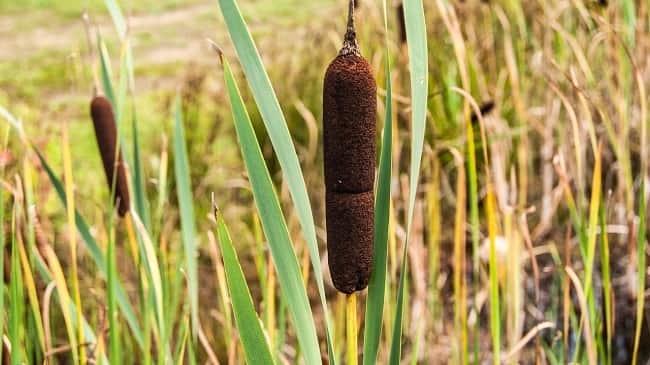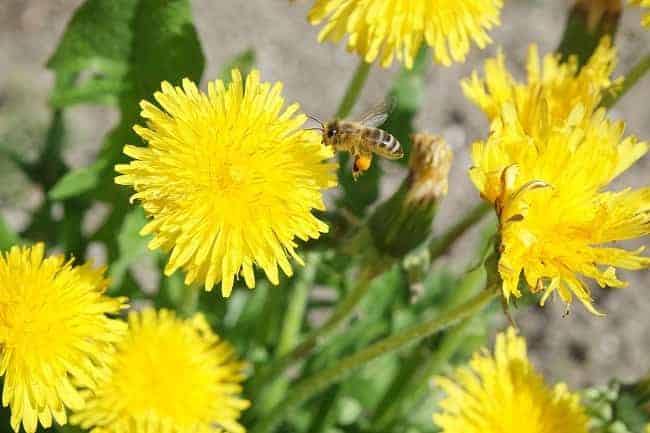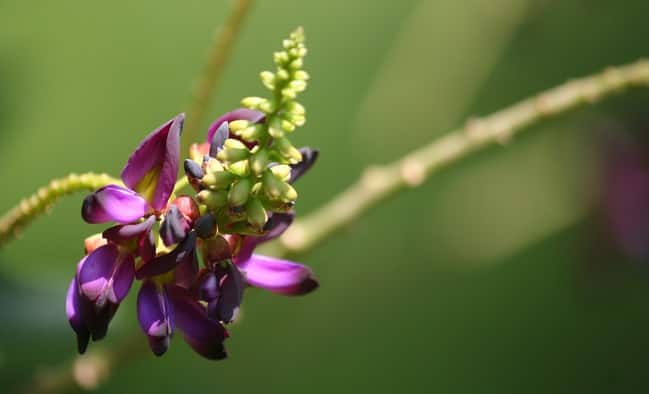Every time we walk through the outdoors we’re stepping over potential food sources.
Underneath the soil level an entire ecosystem of microbes, bacteria, subterranean creatures, and the roots of plants create a diverse and complicated food web. With the right tools and in a survival scenario, the wild edible roots of many common plants can provide a source of nourishment.
We’re going to examine a few trustworthy plants and roots for you to learn about.
Make sure to read through my feature on the basics of foraging before chomping down on any roots you dig up.
Harvesting Roots Requires Digging
Foraging for leafy matter and fruit from plants is a walk in the park compared to procuring roots.
You’ll spend time on your hands and knees removing as much of the rootstock as you can, then cleaning it and removing any debris like soil and stone. Roots of plants are usually heavier than the green and leafy parts, as well.
Read: How to properly clean foraged plants
If you’ve got a shovel or spade with you, removing roots isn’t much of an issue, but what if you don’t have the luxury of carrying the extra weight of even a collapsible shovel with you?
Recommended Reading: Choosing A Survival Shovel
In that situation, a good-quality soil knife is worth its weight in gold. I use this exact knife (Amazon Link) every day at work, gardening and landscaping.
It’s got a solid blade, and the serration on the edge is great for sawing through light material. The blade isn’t sharp (it isn’t supposed to be), but it’s perfect for carefully digging out and transplanting plants from rocky soil.
It’s an ideal choice for the task of getting to and harvesting wild roots.
Why Eat Roots?
Most plants store their energy in their roots. During the growing season, the plant produces as much food and energy as it can and stores it in the roots. When springtime comes, the plant uses this stored energy to produce a new flush of green to start the cycle again.
That means wild edible roots are full of energy and nutrition. They tend to be more starchy and filling than the leafy material you’ll find above the soil.
However, harvesting those roots is far more damaging to plants than removing the green leaves and fruits. Because the roots provide the plant with sustenance for the next growing season, harvesting is potentially fatal to the plant.
In a survival situation, you need to eat, but if you’re foraging as a hobby, remember that root harvesting is a destructive process that often kills the plant.
Can’t I Transplant The Root Stock?
Many plants, like daylilies, will grow into large clumps. Gardeners will dig up clumps of these plants every three or four years and divide the roots, literally chopping the plant into smaller pieces of itself and transplanting them around the garden. Each of these can grow into a new plant, ready to be divided again in a few years.
Some edible roots grow in this fashion, so it’s tempting to plan ahead and start your own survival garden out of these plants. Not a bad idea if it’s a plant in your garden, but never remove wild plants from their native environment.
Not only is it illegal in most areas, it’s also highly unethical.
6 Wild Edible Roots
1. Daylilies

Easily identified during the summer, daylilies have large and flash flowers that are also edible.
The roots of the daylily are delicious when boiled or eaten raw, but only eat the fresh white tubers. Older ones are inedible, and the roots taste best in the fall.
You’ll spot wild daylilies growing on the roadside. They’re often called gutter lilies or trench lilies because of their eagerness to spread and take over an area. At least you’ll have lots of meals!
2. Cattails

Try to harvest cattails only from clean water sources.
Local ponds and streams are often choked with pollutants that could be harmful to your system if you ingest them through plant material.
When harvesting cattails, you’ll need to loosen the mud around the base of the plant and then carefully pull the plant out from the ground.
This is usually easy because of the wet conditions cattails grow in. The roots should be cleaned off (they’ll be filthy), but once clean, are quite taste and almost taste like celery.
They’re best picked late in the fall. They can be eaten raw but are easiest to digest when cooked or boiled.
3. Dandelion

I love these bright yellow flowers, but they are notoriously difficult to eliminate from yards and gardens.
That’s because of their deep taproot that holds onto the soil and snaps quickly and easily. Remove the full root by digging the plant out to a depth of about one foot, then carefully pulling the soil loose.
Springtime harvesting is best, but the dandelion root is edible year round.
I’ve chopped and cooked dandelion root like a carrot (boil it for a few minutes). Younger roots are tastier than older ones, and they can all be eaten raw.
4. Burdock Root

Anybody who has walked through a field or pasture has likely found these annoying brown things attached to your pants and jacket.
Who knew the plant was edible?
Carefully loosen the soil around the burdock plant and then grab hold of the stem. Gently pull, don’t yank, and wait for the root to come free of the soil.
The roots can be eaten raw and have a bit of an artichoke flavor (I never liked the taste), or they can be roasted. The roots will turn brown quickly when exposed to oxygen, so quick preparation is key.
5. Chicory

A lovely flower (also edible) that you’ll spot on roadsides and in areas of compact, poor-quality soil.
Chicory grows in poor conditions exclusively, so it’s a good find in abandoned and urban areas. It’s an excessively bitter root to eat raw, but it can be used as a substitute for coffee.
You can carefully pull the plant right out of the ground, roots and all, or you can loosen the soil a bit around the base of the plant.
This wild edible root is rich in minerals and vitamins and is excellent for turning into coffee. American colonists would use it to stretch out their coffee supplies.
6. Kudzu

You’ll find kudzu crawling all over the place in warm climates, and luckily it has edible portions.
Identify it by the large green leaves growing in sets of three and flowers that smell grape-like. Be careful because kudzu likes to grow near poison ivy.
Like most roots, the younger pieces are much more palatable. The roots closest to the surface are easiest to access in the fall and winter.
Carefully remove soil near the base of the plant and then lift the roots out before separating from the rest of the plant. Cook kudzu root like you would a potato.
I’m Digging These Roots
That’s all for now. Remember that harvesting wild edible roots is deadly to the plants, but when you’ve got to eat, you’ve got to eat.
Never eat something you haven’t positively identified, and always err on the side of caution when eating anything from the outdoors. If you want to sample some of these roots, you can often find them in smaller specialty food stores.
If you find yourself eating these things in a survival scenario, it doesn’t hurt to know what to expect!



Liatris Spicata, Camassia Quamash and Skirret. They all grow in a cold climate up north and have edible tubers.
Your burdock picture looks more like cocklebur. Not common burdock here in Nebraska
What about day lily flowers, edible as well 🙂
Also don’t forget the roots of jerusalem artichokes.
Thanks for the article, it’s always good to know more about wild foods.
Good additions Marcia – thanks.
Great info! Have you ever eaten the small leaves off of a young milk weed? While in the mountains of WV this spring my cousin prepared some for us, they tasted some like bacon.